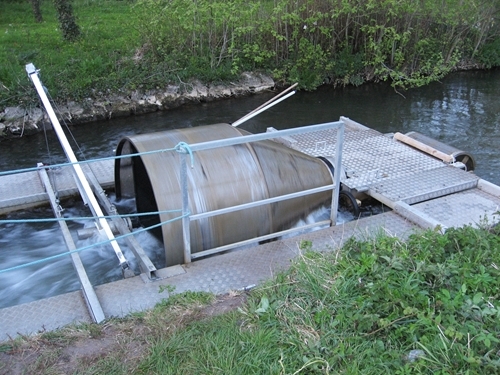The adult salmon counter on the River Frome provides us with vital information regarding the numbers of salmon that return to the river each year to spawn. However, it is also important that we count the number of young salmon – called smolts – that leave the Frome for their seaward journey to the feeding grounds off the coasts of Greenland and the Faroe Islands each spring. Comparing the numbers of young fish that leave the river and return as adults gives us information on the survival rates of salmon in the sea, and with all the detailed information we collect on each fish and their habitat in the river, an insight into why some survive and why some do not.
So that we can estimate the population of smolts that leave the river each spring, in conjunction with the tag readers we have installed, we must operate a rotary screw trap (RST) to sample the fish. The trap is positioned in the river near our Salmon & Trout Research Centre at East Stoke each spring from late March to mid-May, where it operates 24/7.

Rotary screw trap in action.
The RST works by using the river current to turn a large drum, which guides the fish into the central tube that funnels them into a holding box at the end. The holding box is checked every 30 minutes to avoid undue stress on the fish. They are weighed, measured and sometimes small fin and/or scale samples are taken for genetic analysis and aging, and then they are released unharmed.
The trap must be manned by at least two people for safety reasons, so is a huge undertaking for our team. To assist full-time staff with this work we welcome students and volunteers each year, so if you fancy seeing a wild young salmon on its way to the sea please get in touch around the end of each year.
To ensure that the downstream migrating smolts are intercepted by our RST, we deflect them from the main river into a side channel called the millstream. This involves using an acoustic bubble screen, which as the name suggests produces a wall of tiny bubbles across the river, which generates a certain frequency of sound that the fish won’t swim through.
Most smolts migrate at night or during floods when the river is coloured. It is hypothesised that this behaviour is an active decision and/or an adaptive strategy to take advantage of increased food, to reduce predation risk or both.